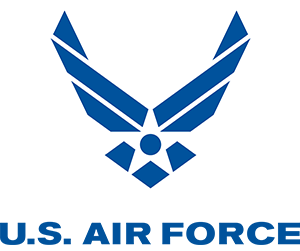Ways to Serve
Full and Part-Time Options
Today’s Military comprises six Service branches, each with active-duty and part-time components. Part-time duty includes five Reserve and two Guard components. Location, mission and service commitments vary greatly, though all are on the same rank-based pay scale.
On This Page
Active Duty (Full-Time)
Active-duty service members are full-time members of the Military, living on base or in military housing and immersed in military culture. After attending boot camp, they are typically stationed at a base either domestically or overseas for terms that typically last two to six years. During this time, they may also explore advanced training opportunities to further build hands-on and technical skills. If service members are deployed, the length of time away varies depending on a unit's specific mission.
Reserve (Part-Time)
The Reserve was created to provide and maintain trained units at home while active-duty service members are deployed. With the exception of the Space Force, each military branch has a Reserve component under its command, which is available for active-duty deployment in times of war or national emergency.
Reservists are part-time service members, allowing them time to pursue a civilian career or college education while simultaneously serving their country. Members of the Reserve attend boot camp and are required to participate in training drills one weekend a month as well as a two-week program each year. Reservists can be deployed to serve alongside active-duty service members for special missions.
Transcription
Related Videos
Career Stories: Army National Guard — A Complementary Commitment
Career Stories: Army National Guard — A Complementary Commitment
Professional Opportunities in the Navy Reserve
Professional Opportunities in the Navy Reserve
National Guard (Part-Time)
The National Guard consists of the Army National Guard and the Air National Guard. Every U.S. state and territory, as well as the District of Columbia, fields their own separate Guard unit, which operates distinctly and separately from the others. Each National Guard group goes by its state name (for example, the New York National Guard) and reports to that state’s governor.
The Guard’s focus is on homeland security and humanitarian relief. In addition to training drills one weekend a month and two full weeks per year, National Guard units assist communities in their state during emergencies like storms, floods, fires and other natural disasters.
During times of conflict, the president can federalize the National Guard, and its service members can be deployed overseas. National Guard members deployed overseas may see combat, but are also assigned noncombat humanitarian tasks, such as building schools and hospitals, training local peacekeepers and other community-building projects.
Split Training (Part-Time)
The Army, Army National Guard and Coast Guard offer a split training option. High school students (and college and vocational students in the case of the Coast Guard) may train for two summers and serve one weekend a month during the school year. They receive pay for their weekend service and, after training is complete, begin Reserve duty. For more information, contact a recruiter.
Federal Government (Full-Time)
Those who serve part-time in the Reserve or Guard may be able to leverage their military training and expertise toward full-time employment opportunities with federal agencies such as the Department of Homeland Security.




Types of Military Service
The U.S. Military consists of six active-duty Service branches and their respective Guard and Reserve components. Together, they offer a broad variety of ways to serve.












